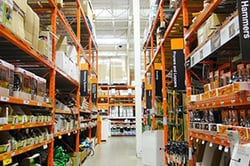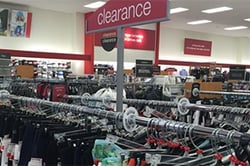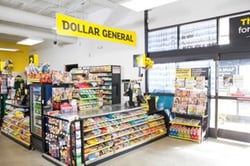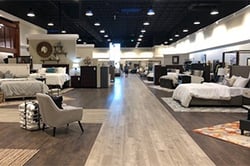The retail sector seems to be reeling. Some companies and even entire retail sectors have lost or are losing in the e-commerce world we live in.
But then there are the 7 Fs of retail.
What are the 7 Fs, you ask? These are seven sectors that have, and are, weathering the retail storm. Let’s take a closer look.
 Fitness
Fitness
What was once a Toys R Us or Sears may soon become a gym. Fitness centers are expanding and finding opportunity in big box locations once held by now-defunct businesses. And as far as being e-commerce proof, while people can certainly workout at home, they can’t workout online.
So, as consumers become more health-conscious and as the economy continues to improve, the fitness/health club sector has grown to be more than a $30-billion-a-year industry. There are more than 36,000 health clubs, gyms, and fitness centers in the U.S., with a growth rate of 2.8 percent since 2013.
Food
The Commerce Department recently reported that sales at food-service and drinking establishments rose 1.3 percent in mid-2018 to $61.6 billion. That bumped up the three-month annualized gain to 25.3 percent, the fastest pace in since 1992.
Additionally, as we noted in our most recent Simon Sum Up, spending on meals prepped outside of the home grew more than 20% from 2013 to 2016, compared to just 2% growth in meals prepped at home.
From meal kits to takeout to fast casual, there are more dining options today than ever before. And while some attribute the increase in consumer restaurant spending to rising prices and restaurant costs, we still can’t ignore the fact that the food scene has changed dramatically in the last decade. For example, the QSR market is expected to rise 4.2 percent by 2022.
 Fun
Fun
As we discussed in a previous blog, consumers are opting to pay for experiences over goods. By 2023, an estimated $78 billion will be lost in spending on goods and instead spend on services or experiences such as recreation, travel, and eating out. This is a shift we’ve seen over the past 10 to 15 years.
In the coming years, we’ll likely see many retail centers move away from a focus on department store anchors toward more diverse networks. Anchors may include trampoline parks, arcades, movie theaters, and even beauty stores like Ulta and Sephora because they provide experiences that are blowing other retailers out of the water.
Frugal
At a time when the traditional department and specialty stores are floundering, off-price retailers and dollar stores have emerged – and their business is booming.
Take, for example, the two big dollar chains (Dollar Tree and Dollar General). Combined, they have more stores than the six biggest U.S. retailers – Walmart, Kroger, Costco, Home Depot, CVS and Walgreens – combined. And they continue to expand as customers spend more money and shop more frequently.
The allure of certain off-price retailers is the price and the convenience. Prices are often a what-you-see-is-what-you-get and the locations tend to be in off-mall sites that are more easily accessible. Additionally, despite the economic turnaround, many consumers are still in more of a play-it-safe mindset and seeking to find great values.
 Fix-It
Fix-It
With the rebound of the housing economy and an increase in discretionary income, fix-it/home improvement stores are seeing the benefits. This sector weathered “the Amazon effect” because many consumers are finding that buying home repair and improvement items in-person more convenient.
Stores like Home Depot, Lowe’s, Ace Hardware, Floor & Decor, and similar concepts have three key attributes that can protect their market share from e-commerce giants: what they sell, service, and location.
The same applies to auto repair stores as well. Companies like O’Reilly Auto Parts and AutoZone have benefitted from a mostly Amazon-proof business model and from consumers opting to repair their own cars.
The nature of the products all of these retailers sell lends itself to human interaction. Buyers still want to ask a person how things work or get real-time professional recommendations.
Furniture
Revenue in the furniture and homeware segment is projected to nearly double by 2022, according to Statista’s 2018 eCommerce Report on Furniture & Appliances.
And as you might get with our previous category (fix-it/home improvement stores) furniture stores have the advantage of offering a stellar in-person experience. Or, they may also provide consumers the opportunity to bargain hunt from large swaths of products at stores like Homegoods or At Home, both of which have posted impressive profits and plans to grow to 1,000 stores and 600 stores respectively.
Furniture sales require a more engaging and informative customer experience than most because of the cost, longevity and decorative nature of the product. Factor in consumer desire to know the scale, size, and comfort of a product, and there will always be a place for furniture stores in the physical retail sector, despite the threat from brands like Wayfair and of course, Amazon.
 Fashion Discounters
Fashion Discounters
Roughly two-thirds of consumers who shop for clothes do so at off-price retailers, according to The NPD Group. Their purchases at these off-price outlets represent 75% of all apparel purchases – across all retail channels. Which is why Moody’s expected a 5.4% growth in the off-price sector compared to just 2.7% for department stores in 2018.
A survey conducted by Deloitte found only 20% of surveyed consumers were better off than they were pre-recession and 80% of those surveyed spend less when shopping then they did in the past.
With the allure of a “treasure hunt” for a great deal, retailers like TJ Maxx, Ross, Burlington Stores, and Gabe’s are racking up top-line growth of more 10 percent. Similar trends can be noted for off-price department stores like Nordstrom Rack and Macy’s Backstage.
Most of these brands see promising signs of positive earnings and continued expansion for years to come.
So, whether it's based on entertainment or an evolving customer experience, there are retail sectors that are still thriving in the ever-changing retail world. These 7 F's of retail are and will continue playing a huge role in the evolution of retail.










